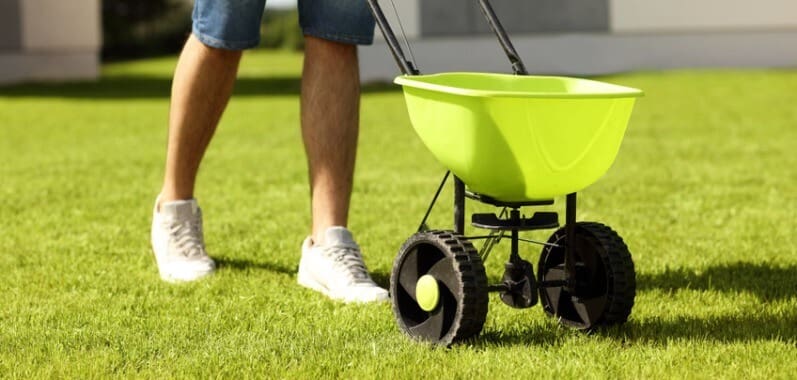
There are several keys to choosing the correct bag of fertilizer for your lawn. If you ignore them and pick the wrong one, you may create more problems for your lawn and you won’t get the results you’re looking for.
Follow these guidelines to achieve a great looking lawn!
How many square feet of lawn do you have?
What type of grass do you have?
How much nitrogen is in bag?
What are the sources of Nitrogen?
How many treatments do you want to do?
The total square footage is important because you can easily buy too much. Then you’re either left with storing extra fertilizer or you might feel inclined to go ahead and put it down which can cause problems of its own. To measure the square footage of the lawn, all you have to do is measure the length and multiply it by the width. Be sure to not measure flower beds and/or gardens.
The types of grass that you have will definitely determine the kind of fertilizer that you’ll need. Tall Fescue and Kentucky bluegrass are the 2 most common grasses found in the KC Metro. According to research from our local universities, Tall Fescue lawns require 3-4 pounds of nitrogen per thousand square feet of lawn for optimal performance. Kentucky bluegrass lawns require 4-5 pounds of nitrogen per thousand square feet of lawn.
The amount of nitrogen that is in the bag will help your determine how many pounds of nitrogen will be applied per thousand square feet. For example; a bag of fertilizer from the hardware store might have a nutrient analysis of 32-0-8 and the bag is 20 pounds and is supposed to cover 5,000 square feet.
Follow this formula
Weight (20) * % Nitrogen using decimal (.32) = this gives you the pounds of nitrogen in the bag (6.4 lbs)
Lbs. of nitrogen (6.4) / number of 1000 square feet in bag (5) = (Lbs of nitrogen per 1000 sq. ft. (1.28 lbs)
This means you are applying 1.28 pounds of pure nitrogen per 1000 sq. ft. of lawn space.
The sources of nitrogen are very important to the process. Let’s say you grab a bag of fertilizer that is predominately made up of water soluble nitrogen. This can mean 3 things. 1) it will be used up fairly quickly by the grass causing quick bursts of new growth often in an uneven pattern 2) if it got rained on, it would most likely wash off 3) if it were applied when it was too hot out, then could cause a foliar burn to the grass.
On the other hand, let’s say you grab a bag of fertilizer that is predominately made up of water-insoluble nitrogen. This can also mean 3 things 1) the nitrogen will be released very slowly in more even looking growth 2) it will be less volatile, meaning it will be more efficiently used by the grass 3) it will be less likely to “burn” the grass due to its slow release.
The number of treatments you wish to make will determine the fertilizer content in the bags you purchase. It is often recommended to make at least 3 treatments per year to achieve 3-4 pounds of Nitrogen for the Tall Fescue and at least 4 treatments to achieve the 4 pounds of nitrogen for the Kentucky bluegrass.
My advice would be to spread them out to at least 4 treatments throughout the year for Tall Fescue and 4 treatments for Kentucky bluegrass. This will give you the opportunity to add an extra treatment in the spring and use less nitrogen to reduce the risk of over growth causing excess thatch and conditions for disease to appear and spread.
Well that’s all folks! I hope this helps you with your journey to creating a great looking lawn!
